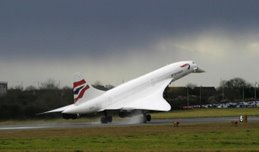My first time in Bern was in 1975, just married! Don't know whether this had any influence, but I think the Bernese Oberland is surely one of the most wonderful regions of Switzerland, which has a lot of them! The snow-capped mountain peaks are stunning and the lush green hills will fascinate anyone around! This time, however, the main reason to visit was a different one!

"WHAT IS THIS? Any idea? Looks a bit weird..."

"THE OTHER SIDE! With a highway just below..."

"CLOSER LOOK"

"FINALLY THERE - The Paul Klee Zentrum is a museum dedicated to Klee, featuring about 40 percent of Klee’s pictorial works. In the summer of 1997, Livia Klee-Meyer, Paul Klee's daughter-in-law, donated her inheritance of almost 690 works to the city of Bern. Together with additional works donated and loaned by the family and the Paul-Klee-Foundation as well as with 200 loans from private collections, it makes the largest collection of Paul Klee's works. The museum, designed by Italian architect Renzo Piano and taking the form of three undulations blending into the landscape, was completed in Schöngrün in 2005"

"KLEE - Paul Klee was born from a German father in Münchenbuchsee (near Bern). He studied art at the Academy of Fine Arts in Munich and after travelling to Italy and then back to Bern, settled in Munich, where he met Kandinsky and became associated with Der Blaue Reiter. He died in Muralto, Switzerland, in 1940, at the age of sixty, with at least 8926 works of art created and without having obtained Swiss citizenship. The Swiss authorities accepted his request six days after his death"

"RESTAURANT SCHÖNGRÜN - A wonderful place for a lunch break (fill the wallet or bring the cards...)"

"ROSES!"

"A WONDERFUL MEAL - Amuse-bouche, scallops, amuse-bouche, chocolate dessert..."

"SCULPTURE IN THE PARK, behind the restaurant and close to the parking lot"


"ALPS - «The Jungfrau-Aletsch-Bietschhorn region is the most glaciated part of the European Alps, containing Europe's largest glacier and a range of classic glacial features, and provides an outstanding record of the geological processes that formed the High Alps.» This is one of the reasons why it has been included in Unesco's World Heritage List. The Eiger (3970 m, the Mönch (4105 m) and the Jungfrau (4158 m) dominate the Bernese Oberland"

"BERN AND THE ALPS - From left to right (hopefully correct): Wetterhorn, Schreckhorn, Eiger, Mönch and Jungfrau!"

"SUNSET at Lake Léman (Lake Geneva)"








































































